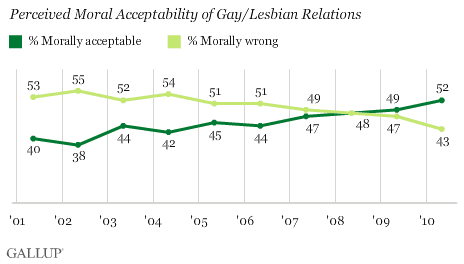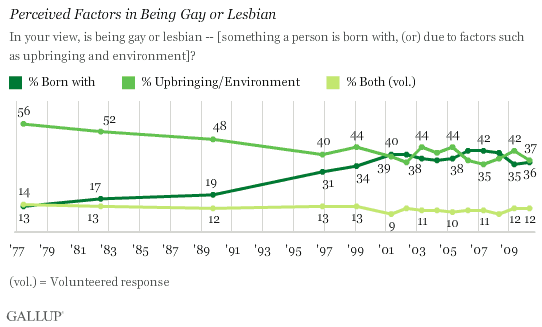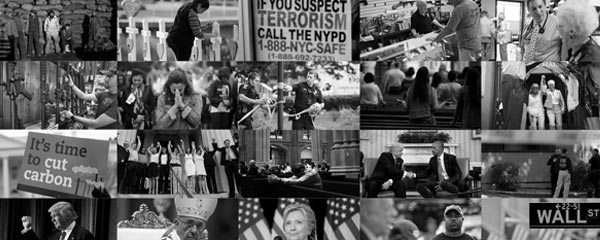PRINCETON, NJ - Americans' support for the moral acceptability of gay and lesbian relations crossed the symbolic 50% threshold in 2010. At the same time, the percentage calling these relations "morally wrong" dropped to 43%, the lowest in Gallup's decade-long trend.

Gallup's annual Values and Beliefs survey, conducted each May, documents a gradual increase in public acceptance of gay relations since about 2006. However, the change is seen almost exclusively among men, and particularly men younger than 50.

Additionally, Gallup finds greater movement toward acceptance among independents and Democrats than among Republicans, and a big jump in acceptance among moderates. Liberals were already widely accepting of gay relations in 2006, and have remained that way, while conservatives' acceptance continues to run low.
Notably, there has been a 16-point jump in acceptance among Catholics, nearly three times the increase seen among Protestants. Acceptance among Americans with no religious identity has expanded as well.

The same May 3-6 Gallup poll finds the slight majority of Americans still against legalizing gay marriage; however, at 53%, the extent of that opposition is down slightly this year.
Acceptance for the legality of gay and lesbian relations has varied over the past decade, but, at 58% today, it is near the highest Gallup has measured (60% in 2003).

Americans remain closely divided over the factors contributing to being gay. Currently, 37% say being gay is due to upbringing and environment while 36% say it is a trait one is born with.
The division on this question has been the norm for most of the past decade, although the plurality response has fluctuated. Longer term, however, there has been a major change in Americans' views on this question, with far fewer today than in the 1970s and 1980s believing that being gay or lesbian is the result of upbringing and other life experiences.

Bottom Line
There is a gradual cultural shift under way in Americans' views toward gay individuals and gay rights. While public attitudes haven't moved consistently in gays' and lesbians' favor every year, the general trend is clearly in that direction. This year, the shift is apparent in a record-high level of the public seeing gay and lesbian relations as morally acceptable. Meanwhile, support for legalizing gay marriage, and for the legality of gay and lesbian relations more generally, is near record highs.
Results are based on telephone interviews with 1,029 national adults, aged 18 and older, conducted May 3-6, 2010. For results based on the total sample of national adults, one can say with 95% confidence that the maximum margin of sampling error is ±4 percentage points.
Interviews are conducted with respondents on landline telephones (for respondents with a landline telephone) and cellular phones (for respondents who are cell phone only).
In addition to sampling error, question wording and practical difficulties in conducting surveys can introduce error or bias into the findings of public opinion polls.
View methodology, full question results, and trend data.
